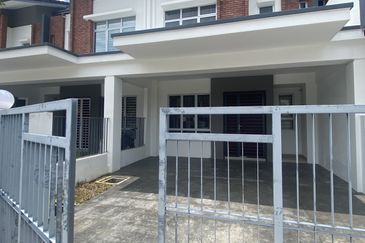KUALA LUMPUR (June 6): Although digital transformation has profoundly disrupted almost every type of business, the real estate industry has been slow to move with the times — until now.
In areas ranging from computer-aided design, to development of new construction materials and technologies, to the use of augmented-reality marketing solutions, a long list of innovative new technologies is starting to gain traction, with potentially profound consequences for the industry.
A recent report released by the Urban Land Institute (ULI) argues that with so many new technologies on the horizon, the issue for property developers is on how to pick out the most promising new technologies amidst a sea of potentially disruptive candidates.
“Cutting-edge tech that may seem appealing at first glance may still be unsuited for real-world applications because it is either underdeveloped, too expensive or too hard to scale,” said the report titled “The Future is Now”. The report was a result of the recently held Second Asia Pacific Leadership Symposium — The Future is Now, organised by ULI and the World Economic Forum (WEF).
“We are nearing a global tipping point and digital transformation is an area that the real estate industry cannot ignore.
“ULI will continue to alert our members to the relevant technological developments in our industry, and we hope that ULI and WEF will continue to provide the leadership and platform for relevant and constructive cutting-edge idea sharing,” said chairman of the ULI–WEF Symposium Nicholas Brooke.
Building Information Modelling, the new mainstream?
One area that developers are more certain about is the potential of new software design tools to manage construction work, with one participant of the symposium saying: “That’s where the mojo is. it’s going to transform current practices.”
The system gaining most traction is Building Information Modelling (BIM), which replaces traditional hardcopy blueprints with 3D computer modelling.
BIM, combined with the easy availability of handheld devices allowing the concept to be applied onsite, gives it “a game-changing advantage over legacy paper-based systems, helping architects and contractors to collaborate more easily and make on-the-fly alterations to existing designs”, said the report.
Among the case study discussed at the symposium was the construction of Sweden’s newly opened 12,000-room New Karolinska Hospital, the world’s biggest-ever public/private partnership hospital project. Its entire complex design was executed using a BIM platform.
Post-construction, BIM is also being used at New Karolinska for handling overall facility management.
“As the hospital’s BIM model contains all construction data in a single plan, managers know immediately which materials are used in any part of the building, where all components are located, and exactly what part will be needed to repair any given equipment breakdown,” said the report.
Rising competitiveness in prefabrication
The report noted that prefabrication is another well-established technology steadily growing in popularity.
“In Singapore, developers have been forced to accelerate adoption of prefab techniques because government policy requires builders to boost productivity in order to cut the number of foreign workers employed in the industry.
“In Hong Kong, soaring labour costs have also made prefab an increasingly attractive option — although the relatively small size of the local market continues to pose challenges in terms of leveraging economies to scale,” said the report.
Elsewhere, the low cost of labour in Asia’s emerging economies means that prefabrication is generally seen as uncompetitive, even in markets such as the Philippines or India, where demand for affordable housing can be measured in the millions or tens of millions of units.
Use of lean construction techniques borrowed from the auto sector, which aim to eliminate waste in both time and materials, was suggested as an alternative to reduce costs when building with prefabricated components.
One obstacle to progress is resistance from the status quo. However, the biggest roadblock of all is regulation, the report stated.
The high level of oversight in Asia’s construction industries is a result of a “need to ensure building safety, creating deep bureaucratic roots with a by-product of this culture being that widespread adoption of new technologies requires wholesale changes in existing building codes and approval processes”.
Bureaucratic mindsets remain generally backward-looking and have little reason to push through new rules.
TOP PICKS BY EDGEPROP

Livia @ Bandar Rimbayu
Telok Panglima Garang, Selangor

Robin @ Bandar Rimbayu
Telok Panglima Garang, Selangor

Penduline @ Bandar Rimbayu
Telok Panglima Garang, Selangor

Penduline @ Bandar Rimbayu
Telok Panglima Garang, Selangor

Chimes @ Bandar Rimbayu
Telok Panglima Garang, Selangor

Taman Tun Dr Ismail (TTDI)
Taman Tun Dr Ismail, Kuala Lumpur

Pangsapuri Akasia, Bandar Botanic
Bandar Botanic/Bandar Bukit Tinggi, Selangor

Pangsapuri Akasia, Bandar Botanic
Bandar Botanic/Bandar Bukit Tinggi, Selangor

Pangsapuri Akasia, Bandar Botanic
Bandar Botanic/Bandar Bukit Tinggi, Selangor

Bandar Bukit Tinggi
Bandar Botanic/Bandar Bukit Tinggi, Selangor











hero.jpg?GPem8xdIFjEDnmfAHjnS.4wbzvW8BrWw)



